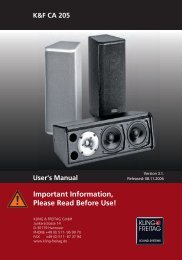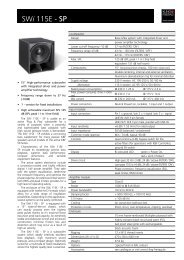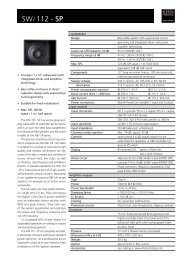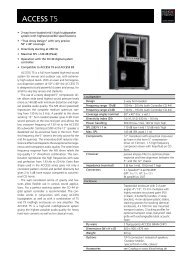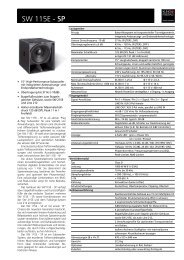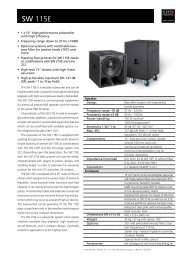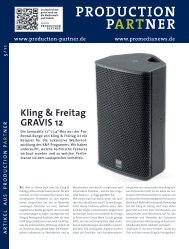Create successful ePaper yourself
Turn your PDF publications into a flip-book with our unique Google optimized e-Paper software.
User's manual<br />
System Amplifier K&F TOPAS<br />
5.4.2 Network Topology<br />
Depending on the demands on the system stability of the network, you can setup different<br />
network topologies.<br />
If you want to setup a ring topology with Ethernet networks, switches are necessary to<br />
enable flexible adjustment of the routings. Otherwise, collisions and packet loss can occur<br />
because of data packages circling in the ring topology. All mechanisms necessary for<br />
administering ring topologies and for quickly switching to alternate routes if there is an error<br />
in a branch of the network are standardised as '(Rapid-) Spanning-Tree' protocols and are<br />
supported by many managed switches.<br />
Depending on the safety demands of the usage, we recommend the following network<br />
topologies:<br />
1. Daisy-Chaining (no redundancy)<br />
Daisy chaining is the simplest way to network several amplifiers. In this case, no external<br />
switch aside from the integrated switches is necessary.<br />
Please ensure that all amplifiers are connected to the electric circuit. Otherwise, the<br />
network signals cannot be passed on via the integrated switch.<br />
2. Star (Malfunction of several amplifiers, large unmanaged switch)<br />
KLING & FREITAG GMBH © 2012 Revision 3.0 Page 19 of 65




